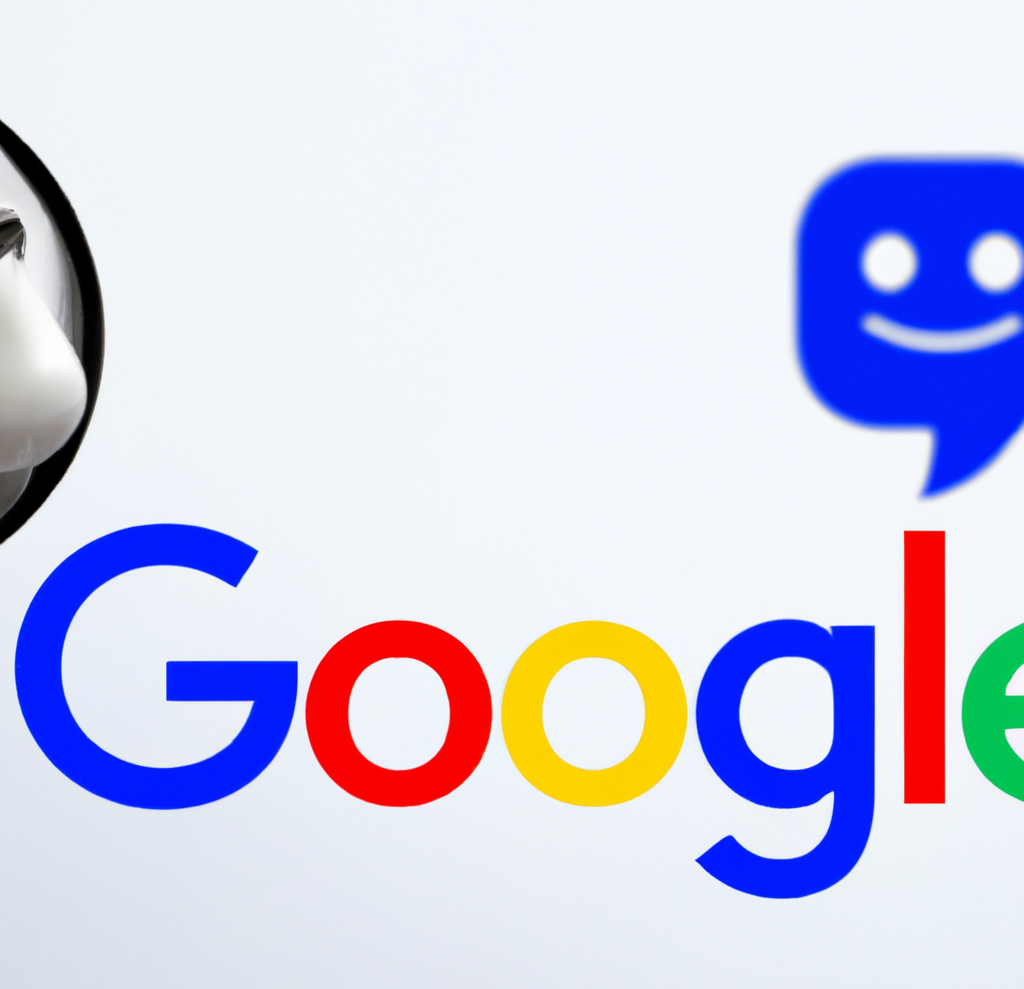Google Clarifies SharedArrayBuffer Email

Google’s Search Central issued a clarification over a confusing message sent out last week by the Google Search Console regarding SharedArrayBuffer issues. Google also updated it’s guide to guide to enabling cross-origin isolation.
What is a SharedArrayBuffer?
SharedArrayBuffer, in simple terms, is the behind the scenes JavaScript methods of functioning that helps them accomplish their tasks in an efficient manner.
According to the Mozilla web workers documentation:
“Web Workers are a simple means for web content to run scripts in background threads.”
And according to another Mozilla developer page:
“With the SharedArrayBuffer, both web workers, both threads, can be writing data and reading data from the same chunk of memory.”
Memory is important because JavaScript works with browser memory and if the page doesn’t handle it well then that can lead to unintended consequences like memory bloat.
The Mozilla developer page further explains:
“ArrayBuffers give you a way to handle some of your data manually, even though you’re working in JavaScript, which has automatic memory management.
…In a typical app, the work is all taken care of by a single individual—the main thread.
…And under certain circumstances, ArrayBuffers can reduce the amount of work that the main thread has to do.”
It goes on to explain that sometimes it’s not enough to split up the work and that’s where the above-mentioned web workers come into play, sharing the same chunk of memory.
Google’s Martin Splitt summarized it like this in 2017 when SharedArrayBuffers were a coming feature:
“JavaScript is single-threaded and long-running scripts make the page unresponsive
Web Workers allow running JavaScript in separate threads, communicating with the main thread using messages.
Messages that transfer large amount of data in TypedArrays or ArrayBuffers cause large memory cost due to data being cloned
…SharedArrayBuffers are an upcoming feature, allowing data to be shared between threads.”
Why You Received the SharedArrayBuffer Message
Google’s Search Central blog explains that the reason publishers received the “mysterious” message was because of something on their web pages is using SharedArrayBuffers, which is a coding trick to speed up JavaScript processes.
According to Google:
“The usage might be due to frameworks, libraries, or other third-party content included within your website.”
Why is SharedArrayBuffer (SAB) a Problem?
SABs became problematic after the discovery of the Spectre and Meltdown Vulnerabilities.
These vulnerabilities affect all Computer Processing Units (CPUs) and allow an attacker to read what’s in the memory. The attack affects all computer devices including Internet of Things devices.
Chrome initially suspended the use of SABs but then re-allowed them after a workaround that essentially isolated the processes.
Chrome and Firefox Change How SharedArrayBuffers are Handled
The reason for the email was an attempt to get the word out about how Chrome will be handling SharedArrayBuffers and to help publishers get on board with processes that will make their sites and their site visitors safer.
In late May 2021, Chrome 91 will be released with a new restriction that will provide a more robust defense against the Spectre and Meltdown vulnerabilities.
“Cross-origin” is a reference to resources (like images, CSS and JavaScript files) that originate outside of a site.
So what’s going on with Chrome 91 and what Google is requiring is setting security policies on resources and essentially locking down what’s allowed according to Chrome’s (and Firefox’s) policies for protecting site visitors and publishers against Spectre vulnerabilities.
That’s good for site visitors but could be bad for site publishers who use SharedArrayBuffer objects without cross-origin isolation.
According to Google’s clarification (making reference to Chrome version 91):
“…cross-origin isolation was standardized as a way to safely enable the SharedArrayBuffer object. Starting with version 91, planned to be released in late May 2021, Chrome will gate the SharedArrayBuffer object behind cross-origin isolation.
…After Chrome 91 is released, the SharedArrayBuffer object without cross-origin isolation will no longer be functional.”
What You Have to Do to Fix SharedArrayBuffer Issue
There are two tasks that need to be accomplished.
- Identify SAB use on your website.
- Fix or remove the functionality
Identifying SAB Usage
Google recommends these steps for identifying SharedArrayBuffers:
“You have two options:
Use Chrome DevTools and inspect important pages.
(Advanced) Use the Reporting API to send deprecation reports to a reporting endpoint.
Learn how to take the above approaches at Determine where in your website SharedArrayBuffer is used.”
Google’s guide to cross-origin isolation offers instructions for using Chrome Dev Tools for identifying use of SharedArrayBuffers.
- “Open the Chrome DevTools on the page you suspect might be using SharedArrayBuffer.
- Select the Console panel.
- If the page is using SharedArrayBuffer, the following message will show up:
[Deprecation] SharedArrayBuffer will require cross-origin isolation as of M91, around May 2021. See https://developer.chrome.com/blog/enabling-shared-array-buffer/ for more details. common-bundle.js:535- The filename and the line number at the end of the message (for example, common-bundle.js:535) indicate where the SharedArrayBuffer is coming from. If it’s a third-party library, contact the developer to fix the issue. If it’s implemented as part of your website, follow the guide below to enable cross-origin isolation.”
Link: How to Enable Cross-origin Isolation
A Lot to Take In
This is a lot to take in because there is a significant amount of development jargon and acronyms to memorize.
The various developer pages are difficult to understand because they tend to define multiple acronyms at the beginning of 2,000 word articles then exclusively refer to the acronyms with no further explanation throughout the article, as if the reader is able to easily retain the meaning of COEP or COOP.
Citations
Official Google clarification:
Clarifications About the SharedArrayBuffer Object Message
Security header background information resource: ScottHelme.co.uk
COEP COOP CORP CORS CORB – CRAP That’s a Lot of New Stuff!
Mozilla developer page about what SharedArrayBuffers are:
A Cartoon Intro to ArrayBuffers and SharedArrayBuffers
Google developer page on analyzing cross-origin isolation
A Guide to Analyzing Cross-origin Isolation
Google developer page on enabling cross-origin isolation
How to Enable Cross-origin Isolation
AI
Exploring the Evolution of Language Translation: A Comparative Analysis of AI Chatbots and Google Translate

According to an article on PCMag, while Google Translate makes translating sentences into over 100 languages easy, regular users acknowledge that there’s still room for improvement.
In theory, large language models (LLMs) such as ChatGPT are expected to bring about a new era in language translation. These models consume vast amounts of text-based training data and real-time feedback from users worldwide, enabling them to quickly learn to generate coherent, human-like sentences in a wide range of languages.
However, despite the anticipation that ChatGPT would revolutionize translation, previous experiences have shown that such expectations are often inaccurate, posing challenges for translation accuracy. To put these claims to the test, PCMag conducted a blind test, asking fluent speakers of eight non-English languages to evaluate the translation results from various AI services.
The test compared ChatGPT (both the free and paid versions) to Google Translate, as well as to other competing chatbots such as Microsoft Copilot and Google Gemini. The evaluation involved comparing the translation quality for two test paragraphs across different languages, including Polish, French, Korean, Spanish, Arabic, Tagalog, and Amharic.
In the first test conducted in June 2023, participants consistently favored AI chatbots over Google Translate. ChatGPT, Google Bard (now Gemini), and Microsoft Bing outperformed Google Translate, with ChatGPT receiving the highest praise. ChatGPT demonstrated superior performance in converting colloquialisms, while Google Translate often provided literal translations that lacked cultural nuance.
For instance, ChatGPT accurately translated colloquial expressions like “blow off steam,” whereas Google Translate produced more literal translations that failed to resonate across cultures. Participants appreciated ChatGPT’s ability to maintain consistent levels of formality and its consideration of gender options in translations.
The success of AI chatbots like ChatGPT can be attributed to reinforcement learning with human feedback (RLHF), which allows these models to learn from human preferences and produce culturally appropriate translations, particularly for non-native speakers. However, it’s essential to note that while AI chatbots outperformed Google Translate, they still had limitations and occasional inaccuracies.
In a subsequent test, PCMag evaluated different versions of ChatGPT, including the free and paid versions, as well as language-specific AI agents from OpenAI’s GPTStore. The paid version of ChatGPT, known as ChatGPT Plus, consistently delivered the best translations across various languages. However, Google Translate also showed improvement, performing surprisingly well compared to previous tests.
Overall, while ChatGPT Plus emerged as the preferred choice for translation, Google Translate demonstrated notable improvement, challenging the notion that AI chatbots are always superior to traditional translation tools.
Source: https://www.pcmag.com/articles/google-translate-vs-chatgpt-which-is-the-best-language-translator
Google Implements Stricter Guidelines for Mass Email Senders to Gmail Users

Beginning in April, Gmail senders bombarding users with unwanted mass emails will encounter a surge in message rejections unless they comply with the freshly minted Gmail email sender protocols, Google cautions.
Fresh Guidelines for Dispatching Mass Emails to Gmail Inboxes In an elucidative piece featured on Forbes, it was highlighted that novel regulations are being ushered in to shield Gmail users from the deluge of unsolicited mass emails. Initially, there were reports surfacing about certain marketers receiving error notifications pertaining to messages dispatched to Gmail accounts. Nonetheless, a Google representative clarified that these specific errors, denoted as 550-5.7.56, weren’t novel but rather stemmed from existing authentication prerequisites.
Moreover, Google has verified that commencing from April, they will initiate “the rejection of a portion of non-compliant email traffic, progressively escalating the rejection rate over time.” Google elaborates that, for instance, if 75% of the traffic adheres to the new email sender authentication criteria, then a portion of the remaining non-conforming 25% will face rejection. The exact proportion remains undisclosed. Google does assert that the implementation of the new regulations will be executed in a “step-by-step fashion.”
This cautious and methodical strategy seems to have already kicked off, with transient errors affecting a “fraction of their non-compliant email traffic” coming into play this month. Additionally, Google stipulates that bulk senders will be granted until June 1 to integrate “one-click unsubscribe” in all commercial or promotional correspondence.
Exclusively Personal Gmail Accounts Subject to Rejection These alterations exclusively affect bulk emails dispatched to personal Gmail accounts. Entities sending out mass emails, specifically those transmitting a minimum of 5,000 messages daily to Gmail accounts, will be mandated to authenticate outgoing emails and “refrain from dispatching unsolicited emails.” The 5,000 message threshold is tabulated based on emails transmitted from the same principal domain, irrespective of the employment of subdomains. Once the threshold is met, the domain is categorized as a permanent bulk sender.
These guidelines do not extend to communications directed at Google Workspace accounts, although all senders, including those utilizing Google Workspace, are required to adhere to the updated criteria.
Augmented Security and Enhanced Oversight for Gmail Users A Google spokesperson emphasized that these requisites are being rolled out to “fortify sender-side security and augment user control over inbox contents even further.” For the recipient, this translates to heightened trust in the authenticity of the email sender, thus mitigating the risk of falling prey to phishing attempts, a tactic frequently exploited by malevolent entities capitalizing on authentication vulnerabilities. “If anything,” the spokesperson concludes, “meeting these stipulations should facilitate senders in reaching their intended recipients more efficiently, with reduced risks of spoofing and hijacking by malicious actors.”
Google’s Next-Gen AI Chatbot, Gemini, Faces Delays: What to Expect When It Finally Launches

In an unexpected turn of events, Google has chosen to postpone the much-anticipated debut of its revolutionary generative AI model, Gemini. Initially poised to make waves this week, the unveiling has now been rescheduled for early next year, specifically in January.
Gemini is set to redefine the landscape of conversational AI, representing Google’s most potent endeavor in this domain to date. Positioned as a multimodal AI chatbot, Gemini boasts the capability to process diverse data types. This includes a unique proficiency in comprehending and generating text, images, and various content formats, even going so far as to create an entire website based on a combination of sketches and written descriptions.
Originally, Google had planned an elaborate series of launch events spanning California, New York, and Washington. Regrettably, these events have been canceled due to concerns about Gemini’s responsiveness to non-English prompts. According to anonymous sources cited by The Information, Google’s Chief Executive, Sundar Pichai, personally decided to postpone the launch, acknowledging the importance of global support as a key feature of Gemini’s capabilities.
Gemini is expected to surpass the renowned ChatGPT, powered by OpenAI’s GPT-4 model, and preliminary private tests have shown promising results. Fueled by significantly enhanced computing power, Gemini has outperformed GPT-4, particularly in FLOPS (Floating Point Operations Per Second), owing to its access to a multitude of high-end AI accelerators through the Google Cloud platform.
SemiAnalysis, a research firm affiliated with Substack Inc., expressed in an August blog post that Gemini appears poised to “blow OpenAI’s model out of the water.” The extensive compute power at Google’s disposal has evidently contributed to Gemini’s superior performance.
Google’s Vice President and Manager of Bard and Google Assistant, Sissie Hsiao, offered insights into Gemini’s capabilities, citing examples like generating novel images in response to specific requests, such as illustrating the steps to ice a three-layer cake.
While Google’s current generative AI offering, Bard, has showcased noteworthy accomplishments, it has struggled to achieve the same level of consumer awareness as ChatGPT. Gemini, with its unparalleled capabilities, is expected to be a game-changer, demonstrating impressive multimodal functionalities never seen before.
During the initial announcement at Google’s I/O developer conference in May, the company emphasized Gemini’s multimodal prowess and its developer-friendly nature. An application programming interface (API) is under development, allowing developers to seamlessly integrate Gemini into third-party applications.
As the world awaits the delayed unveiling of Gemini, the stakes are high, with Google aiming to revolutionize the AI landscape and solidify its position as a leader in generative artificial intelligence. The postponed launch only adds to the anticipation surrounding Gemini’s eventual debut in the coming year.
-

 SEO7 days ago
SEO7 days agoGoogle Limits News Links In California Over Proposed ‘Link Tax’ Law
-

 SEARCHENGINES6 days ago
SEARCHENGINES6 days agoGoogle Core Update Volatility, Helpful Content Update Gone, Dangerous Google Search Results & Google Ads Confusion
-
SEARCHENGINES7 days ago
Daily Search Forum Recap: April 12, 2024
-

 SEO6 days ago
SEO6 days ago10 Paid Search & PPC Planning Best Practices
-

 MARKETING6 days ago
MARKETING6 days ago2 Ways to Take Back the Power in Your Business: Part 2
-

 MARKETING4 days ago
MARKETING4 days ago5 Psychological Tactics to Write Better Emails
-

 SEARCHENGINES5 days ago
SEARCHENGINES5 days agoWeekend Google Core Ranking Volatility
-

 PPC6 days ago
PPC6 days agoCritical Display Error in Brand Safety Metrics On Twitter/X Corrected












